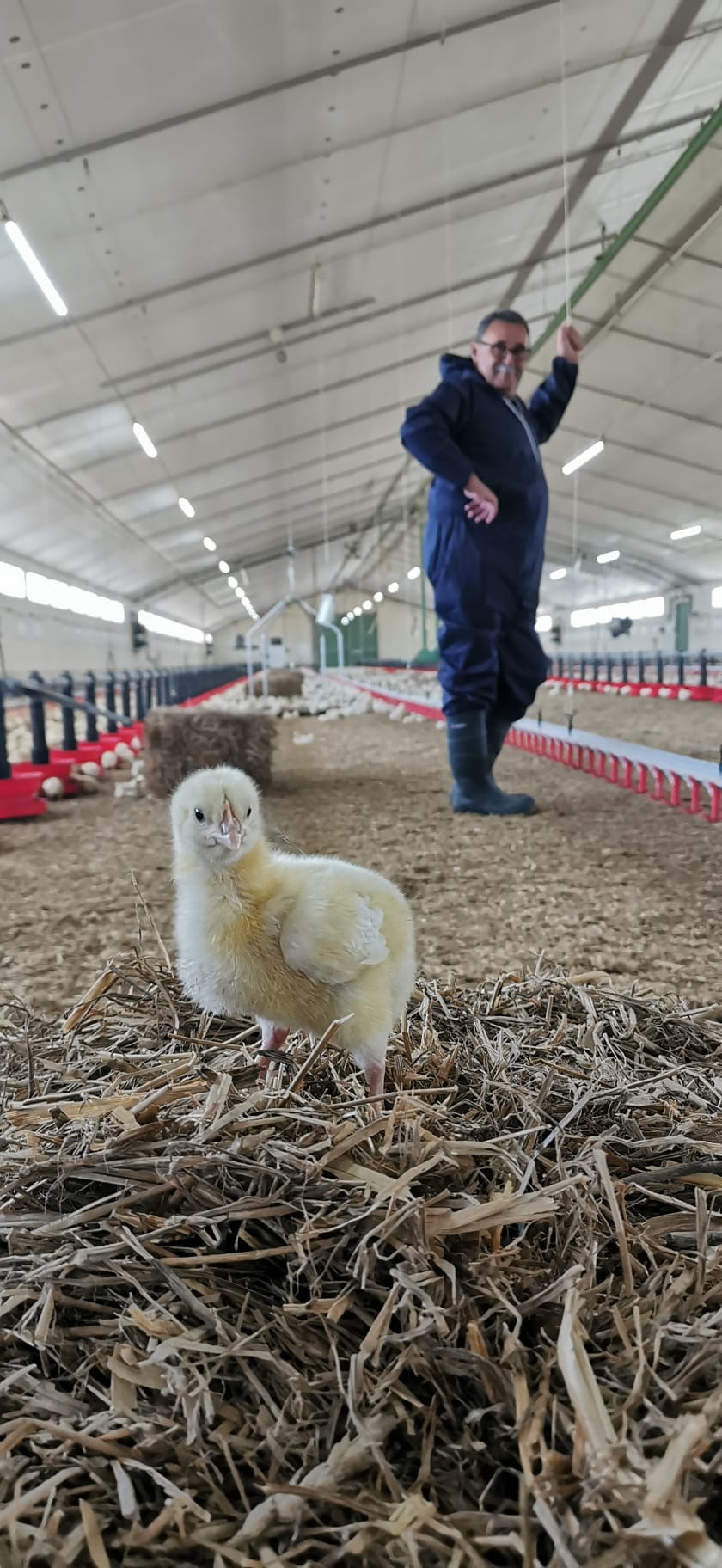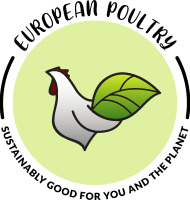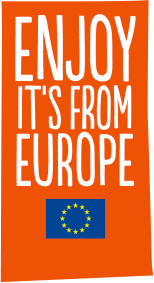Which came first, the (sustainable) chicken or the egg?
A brief overview of the Sustainable Poultry value chain
Eggs come from chickens and chickens come from eggs: that’s the basis of this ancient riddle. But eggs – which are just female sex cells – evolved more than a billion years ago, whereas chickens have been around for just 10.000 years.
So the riddle is easy to solve…isn’t it?[1]
Speaking of chickens: did you know that poultry became an essential part of our diet around the 20s? It was not until the 1920 that production began in real poultry houses. At that time, chickens were raised mainly for their eggs.
Only in the 50s, chicken farms for the meat market had largely surpassed layer farms.
Back to nowadays, you’ll be interested to know that, before arriving into retail, poultry meat products go through a whole, controlled process of great quality and safety that begins with something as simple as an egg.
Keep reading if you want to find out more about the European Poultry value chain![2]
Stage 1: Primary breeding farms
 As the first stage in the production chain, pedigree chicken groups are bred under strict hygiene conditions in specialised farms. To ensure the health and welfare of the animal and the quality of the later product, disease prevention controls and biosecurity are guaranteed through several aspects for health, welfare and egg productivity.
As the first stage in the production chain, pedigree chicken groups are bred under strict hygiene conditions in specialised farms. To ensure the health and welfare of the animal and the quality of the later product, disease prevention controls and biosecurity are guaranteed through several aspects for health, welfare and egg productivity.
Furthermore, the selection process focuses on genetic characteristics, naturally inner to chickens, likely to be passed to the chick. These breeding measures have helped for the past 15 years in reducing the amount of feed needed to produce 1kg of poultry meat.[3]
From this breeding process initiates the line of animals all the way to broiler chickens bred for meat production.
Stage 2. Hatcheries
This is where the cute, little chicks happen!
Fertilised eggs arrive at hatcheries and go through an incubation phase of 21 days. Best part is the process mirrors the brooding hen’s particularities (heat conditions), until the egg is hatched!
Environmental and hygiene requirements are ensured and optimised to help the chicks hatch in the best health conditions. After all, the EU standards guarantee that poultry farming meets the same minimum requirements in all Member States, includings hatching farms.
After hatching, all the chicks, go through inspection and spray vaccination, ready to be transported to broiler farms by trucks with special requirements to ensure a climate-controlled environment. Animal health and welfare in all the stages of the production chain is part of the sustainability aspect of the sector.
Stage 3. Broiler farms
Recently hatched chicks arrive at broiler farms and keep in specific heat conditions during the feeding phase. Feed and water in the European poultry sector are obtained through sustainable use of natural resources and choice of feed by choosing locally grown crops. This way, all nutritional needs of the chicks are met while they grow.
In the EU, fattening poultry takes place in large flocks in floor systems – This allows the birds to move freely and perform their natural behaviours (pecking, scratching, and dustbathing).[4] This way, they ensure to be raised with high welfare and health conditions, through innovative technologies enabling farmers to monitor and regulate temperature conditions in real-time, as well as feed management, weight and lighting.
Furthermore, broiler farms in the EU are allowed a maximum stocking density of 33 kilograms per square metre for chicken, which is reached only towards the end of the rearing phase[5]. According to the Council Directive (EC) 2007/43, however, it can be increased to up to 42 kilogrammes for chickens under very strict conditions.
In the barns, the animals always have access to fresh drinking water and feed. The floor is covered with natural bedding, and the lighting provides a natural day-night rhythm. Air circulation, dust content, humidity, and air quality are subject to constant electronic monitoring to ensure that the animals are reared in conditions appropriate to their species.

Stage 4. Processing plants
Transportation to the processing plant occurs when the broiler chickens are ready in weight terms. High standards in transportation guarantee a stress-free journey to the slaughterhouse. This means that there are specific guidelines to follow for transport from the breeding farm to the slaughterhouse, including regulations on how the animals must be completely healthy before getting location shifted. Strict regulations on space during transport and transport times must be observed, for the animals must not be on the road for longer than 12 hours.[6]
Another remarkable factor for animal welfare is the staff’s expertise and responsible behaviour in everyday production, as many professionals are involved in the supervision of the processing plant link of the production chain (veterinarians, inspectors…)
At the plant, the first step is to inspect the animal. Strict hygiene and labelling requirements ensure high product safety, being a decisive factor for animal welfare the staff’s expertise and responsible behaviour in everyday production.
These hygiene regulations apply to the entire process (slaughtering, processing and marketing): every room and all equipment must meet high standards. Companies are therefore obliged to apply HACCP-based procedures. This way, compliance with animal welfare and hygiene requirements is monitored by an official veterinarian who carries out numerous checks before and after slaughter.
Chickens are put into unconsciousness before slaughter, with humanly and scientifically approved methodologies, to ensure that any avoidable pain, suffering, stress or excitement is prevented. The official veterinarian and their assistants are present in the slaughterhouse throughout the day to supervise the operations. Then, defeathered carcasses and the internal organs are removed. Feathers, blood and other by-products are later used in other sectors in a process of giving value to every part of the animal. This way, all by-products can be exploited for other purposes and in other sectors such as fertilisers, feed, components of pet food, and so on.
The carcasses are washed, and then chilled, graded and weighed. Later, some are destined for sale as whole pieces, others are sold by cuts and others continue the processing chain into other meal options (charcuterie, ready-to-go meals…).
Moreover, whether chilled or frozen: each packaging unit must be labelled when it leaves the slaughterhouse or processing plant, so that it can be easily traced.
In conclusion: the sustainability of the value production chain in poultry is present in every step of the animal life cycle, taking care of its safety and welfare, in order to deliver a product of quality and of responsible production.
Promotion programme to inform about the Sustainable European Poultry Sector
SUST EU POULTRY is a two-year promotion campaign supported by the European Commission and launched by three national poultry associations and their European umbrella association (from Germany, France and Spain) with the main goal of raising awareness among European consumers and professionals about the sustainability of the European poultry sector and a product of great quality.
————————————————————————————————-
Additional information
PRESS CONTACT Ana María Martín ATLAS MARKETING STUDIO internacional@atlasmarketingstudio.com | CONTACT AVEC Federica Chiarella AVEC SECRETARIAT sust@eu-poultry.eu |
The content of the present advertising solely represents the opinion of the author and is the exclusive responsibility of the same.
The European Commission assumes no responsibility for the use that may be made of the information contained therein.
[1] Which came first, the chicken or the egg? https://www.newscientist.com/question/came-first-chicken-egg/
[2] International Poultry Council
[3] AVIAGEN. http://eu.aviagen.com/about-us/sustainability/
[4] AVEC, This is European Poultry! Press Kit 2020.
[5] AVEC, This is European Poultry! Press Kit 2020.
[6] AVEC, This is European Poultry! Press Kit 2020







